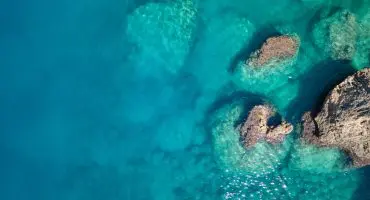WHAT TO SEE & DO :
The twelve cities hosting football matches for the 2014 FIFA World Cup are : Belo Horizonte, Brasilia, Cuiaba, Curitiba, Fortaleza, Manaus, Natal, Porto Alegre, Recife, Rio de Janeiro, Salvador and São Paulo.

BELO HORIZONTE:
This city of 2 million inhabitants located in the Southeast of Brazil is the capital of the state of Minas Gerais. Unlike other parts of Brazil, the temperature in this region is relatively mild in summer and makes for an excellent starting point, especially if you’re not used to hot weather. Nearby you’ll find cites like Ouro Preto and Sabara, both of which are worth a visit if you’re not pressed for time.
To see: Belo Horizonte is an industrial city with few tourist attractions. It does have some spectacular parks, as well as the beautiful church of San Francesco d’Assisi designed by Brazilian architect Oscar Niemeyer.
BRASILIA:
Located right in the heart of the country, Brasilia is the capital of Brazil. This new city, designed by renowned architects like Oscar Niemeyer and Lucio Costa, was only built in the late 50’s and is now a declared UNESCO world heritage site. Its definitely worth a visit, if only to see some of its unique and futuristic buildings!
To see: the archaeological site of Pedra da Lapa and Mount Vulture.
CUIABA :
If you love nature, Cuiba is definitely the ideal destination for you! Apart from the city’s historic centre and a few fascinating museums, the tropical and dense jungle of the Amazon, the mountain of Chapada dos Guimaraes and the Cerrado savannah are a few of the places you should take your time exploring.
CURITIBA:
Curitiba, the capital of the state of Paraná, is located relatively close to the Atlantic coast. Cosmopolitan and dynamic, this city is home to over 3 million people and is thought to have the highest quality of life in the country.
Fun fact: Curitiba is one of the greenest and less polluted cities in Brazil, and is home to some incredible historic buildings and beautiful natural parks.
FORTALEZA:
The coastal city of Fortaleza is known for having many fabulous beaches, with Praia do Futuro, Cumbuco, Jericoara Morro Branco and Canoa Quebrada being some of the most popular. It’s a true mecca for anyone who enjoys surfing, snorkelling or sunbathing. But should you prefer city life instead, Fortaleza also has some remarkable landmarks worth visiting like Theatro José de Alencar, Praça do Ferreira, Praça Clóvis Bevilaqua and the Gothic cathedral Igreja da Sé. At nighttime, the city comes to life as residents and tourists alike overflow the streets dancing to the Brazilian rhythms of Forro and Samba!
MANAUS:
Manaus is the capital city of the state of Amazonas, and its port is one of the country’s main commercial centres. As it is located near the Amazon rainforest, Manaus is also an attractive destination for ecotourism enthusiasts. Some of the top places worth visiting are Alfândega de Belém, Mercado Adolfo Lisboa and Praça da Saudade. Not too far away, you’ll find the beach of Ponta Negra, known for its white sand and dark water.
NATAL:
Natal is the capital of Rio Grande do Norte, one of the states in the northern region of the country. Like many other cities located along the coast of Brazil, this city also has a great number of beaches, each more exotic and alluring than the next! Some of the ones worth mentioning are Natal Ponta Negra, known for its white sand dune, Praia de Areia Preta, a place full of bars that play live music until the early hours of the morning, and Praia dos Artistas, a favourite with surfers. Two typical activities you can have a go at in this region are sand-boarding (similar to snowboarding) and camel riding (Dromedunas).
PORTO ALEGRE:
Porto Alegre is a tranquil city located in the south of the country and home to 1.5 million Brazilians. The interesting mix of baroque and modern buildings, wide avenues and beautiful parks give it a certain charm and make it a favourite with tourists.
RECIFE :
Nicknamed the “Brazilian Venice” because of its narrow streets and countless bridges crossing the waterways, Recife is a fascinating destination with a lot to offer.
Take your time admiring the beautiful Portuguese colonial buildings scattered around the city and discovering the old town, now a UNESCO cultural heritage site. If you head down south, you’ll reach the beaches of Maracaipe, Porto de Galinhas, Toquinho, Guadalupe and “Carneiros”.
RIO DE JANEIRO:
With more than 6 million residents, this is the largest city in the country and one of the most popular destinations in Brazil. Due to its unbelievable landscapes, diverse neighbourhoods, idyllic beaches, rich culture, and internationally renowned carnival, Rio is Brazil’s tourist magnet.
Tip: make sure you visit the neighbourhood of Santa Teresa and Lapa, and if you have time, stop by the beaches of Ipanema and Botafogo.

SALVADOR:
Salvador is the capital of the state of Bahia and the most important city in the Northeast of Brazil. As you travel around Bahia, you will start to notice just how predominant African culture is in this region, in its gastronomy and traditions.
Whatever you do, make sure you stop to see the city’s historic centre (Pelourinho) which has the largest number of baroque buildings in South America. If you can, visit the nearby island of Itapaca. It’s truly magical.
SAO PAOLO:
With more than 11 million inhabitants, São Paulo is Brazil’s largest metropolis. If you are touring around the country and are on a tight schedule, we advise you to see only the city’s main attractions: the Julio Prestes Railway Station , the Teatro Comunale , the Monastery and the Church of St. Benedict, the Immigrant Memorial and the Ibirapuera Park .
TICKETS || GENERAL INFORMATION | PLANNING YOUR TRIP | WHERE TO STAY | TRANSPORTATION | GASTRONOMY |
WHAT TO SEE & DO



